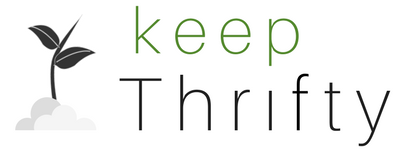
If you read enough personal finance articles, you’re bound to have come across numerous discussions about needs versus wants.
If you take the messages at face value, you’ll come away with a sense that the majority of your financial issues come from an inability to minimize your wants.
This sage advice comes from all over, whether it be from your favorite personal finance blogger or musicians from the 1990’s.
It’s not having what you want
It’s wanting what you’ve got
Sheryl Crow
At the end of the day, most financial “wisdom” these days seems to tell you that wants are bad and you should get rid of those urges altogether.
Live like a caveman and you can retire in 3 years!
While I appreciate the sentiment, I think people often take this too far.
Money is a tool. A tool that is meant to be exchanged for things that are of value.
So, why are wants bad? If your wants are things that align with your values, aren’t they completely worth spending on?
Frivolous Wants
The problem is that unfortunately, for most people, the wants they spend are not in alignment with their values.
It’s the cute, but frivolous, serving tray from the Target Home Decor aisle that they didn’t even know existed until they entered the store.
It’s the awesome new thing on Kickstarter that is such a cool idea (and look awesome!) but solves a problem they don’t really have.
It’s habitual spending on in-app purchases, whether it’s a new outfit for a digital pet or a new gun to kill those pesky zombies.
These purchases are wants in the moment, but aren’t usually an accurate reflection or real values.
How do I know? Because Jaime and I have been there.
We have always wanted to travel. But despite making a decent income, we never seemed to find the money.
Disappointed that we couldn’t afford to travel, we’d blow our money on ice cream treats, carry-out dinners, revolving household decor, and kitchen gadgets.
And, because we blew our money on these, we never had the money to travel.
It was a vicious cycle.
But once we started tracking our spending, everything changed.
We started to see how much we spent on ice cream. How much we spent on carry-out. How much on decor, and how much on gadgets.
And when we saw the totals, it was staggering.
Values-Based Wants
Seeing the big picture of our spending helped us understand the crazy amount of money we were spending on frivolous purchases. When we saw those numbers rolled up, we knew we could shrink our frivolous spending without feeling any real pain.
Cooking six nights a week instead of four would save us hundreds in our food bill.
Cutting Target and Costco out of our shopping altogether would eliminate even more in impulse buys.
And with these thousands of dollars, we could afford to travel. We could afford to increase our charitable giving. We could prepay our mortgage and save for retirement.
Once we were able to look at our spending at a high level, we quickly saw that we had more than enough to spend on our wants - at least the wants that really added value to our lives.
It wasn’t about foregoing wants, it was about prioritizing wants based on our values. (Tweet this )
Over the last three years, we’ve refined this practice year-over-year:
- In 2016, we spent $104,000 total
- In 2017, we spent $92,000 total
- In 2018, we spent $83,000 total
- In 2019, we’ve budgeted $80,000 (not including our house down payment and initial furnishing)
And all the while, we’ve steadily increased our spending on value-adding wants:
- In 2016, we spent $4,400 on travel and $6,700 in charity
- In 2017, we spent $5,300 on travel and $2,750 in charity
- In 2018, we spent $19,000 on travel and $4,000 in charity
- In 2019, we’ve budgeted $12,000 for travel and $12,000 for charity
This is the spending that gives us joy. The spending that we feel aligns with our values, and I wouldn’t eliminate this at all. These aren’t bad wants - these are the wants that are most important.
What’s Next
Jaime’s going through the exercise of recategorizing all of our entries in Thrifty into value-based wants, “fun” (aka frivolous wants), and needs.
Once we get through that, We’re going to take a look at how our proportion between these has changed over time and we’ll share the results year.
Without seeing the numbers in front of me, I can tell you that we feel so much better about how we budget and spend today.
Having money carved out for our priorities make me completely comfortable saying “yes” to a last-minute family trip to Nevada. It makes us happy to increase our giving to great causes like The Hope Effect and World Vision.
This process has changed our lives. And I bet it can change yours too.
So, I challenge you.
Track your spending for three months. Measure how much you’re actually spending on those frivolous wants and see what real wants you could afford if you cut the frivolous ones in half.
